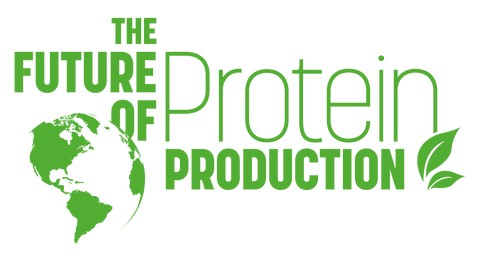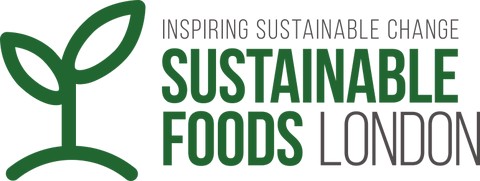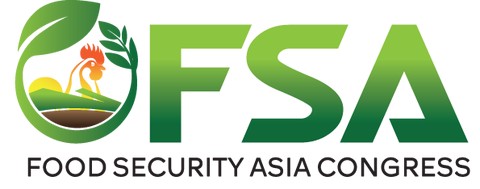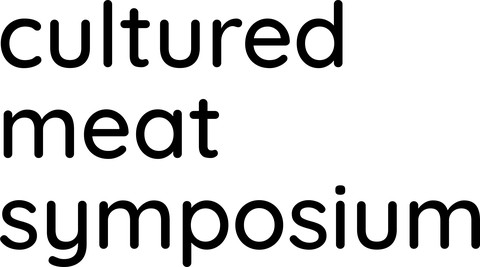Cultured Meat: Future Protein and Medicine
October 14, 2021 - 10 min read
This is a Student Essay Contest 2021 honorable mention essay. Roka Kakehi is an undergraduate chemistry major at the University of Pennsylvania.
Studying abroad in Costa Rica for two years in high school was the impetus for me to realize the close relationship between food, particularly proteins, and health. One of the things which surprised me was that whenever I walked around towns there, I saw far more overweight people than I did in Japan, where I grew up. The Global Nutrition Report states that Costa Rica has a high obesity rate with about 21.1% of adult men and 30.4% of adult women struggling with obesity (“Country Nutrition Profiles”). I thought about the reason behind this high rate, and then I realized that the eating habits in Costa Rica are very different from those in Japan, which has only 4% of the obesity prevalence rate (“Lower Prevalence”). For instance, the proportion of carbohydrates per meal is high and that of protein is low for Costa Rican meals on average. Most of the traditional food there contains a lot of carbohydrates like Gallo Pinto, which is a traditional breakfast made from rice and beans. This habit causes the amount of protein intake to be low, and also the protein sources are often fatty or fried meat. This was just my guess about the high obesity rate in Costa Rica, but as I further gained knowledge by myself, I encountered an idea of the protein leverage hypothesis, which states that a decline in the ratio of protein intake to carbohydrate and fat causes excess energy intake, which may lead to obesity (Gosby et al. 1). Although this is not the only reason for the high obesity rate, this learning experience made me desire to produce new healthy food, especially protein.
As the situation in Costa Rica suggests, intaking balanced nutrients, including proteins, is important for preventing diet-related noncommunicable diseases. However, there are several issues and obstacles that we need to overcome in order to achieve the future where all people, including people in developing countries, have enough protein sources and take nutritionally balanced meals. I believe that cultured meat can contribute to solving these issues. Cultured meat is made by growing muscle cells of livestock in the lab. I have been studying and researching cultured meat as an undergraduate student. In this essay, I argue that cultured meat can be our future protein source which proposes a new possibility of protein as medicine as well as creates a sustainable protein supply system.
Cultured meat can be an innovative way of preventing or curing lifestyle diseases caused by imbalanced nutrition by supplying meat that has optimized and personalized nutrition for each person. Meat is one of our most common protein sources, but at the same time, eating meat can cause noncommunicable diseases. For instance, it is said that high consumption of red beef raises the risk of heart disease and diabetes (“What’s the Beef”). Although people should be aware of the nutrition of their diets and change what they eat if necessary, it is not always easy for people with or without lifestyle diseases to suddenly change their eating habits, especially for people who love eating meat. Additionally, planning a different menu for a person who has nutritional issues is troublesome for the person as well as for their family members who make meals. The person also might feel excluded by eating different meals from their family members at the table. Cultured meat can reduce people’s stress of changing meals by supplying meat which looks exactly the same as the traditional meat but contains more or different nutrients. Since cultured meat is made by growing cells in the lab, it is theoretically possible to design its composition by adding different nutrients. For instance, we could remove saturated fats, which may increase the risk of heart disease, and instead add polyunsaturated fats like plant-based fats and DHA, which may reduce the risk of cardiovascular disease (Lamarco). In this way, we will be able to produce cultured meat which contains personalized and optimized nutrients depending on the person’s needs and health condition. People can prevent disease by eating these nutritionally balanced cultured meats. This is not possible for the current animal agriculture system which makes meat directly by killing animals. Moreover, researchers are trying to make cultured meat be cooked and look exactly the same as traditional meat. Thus, people will not have to experience the trouble of serving meats by different cooking methods nor ever feel isolated by eating different foods with other people. Being able to choose nutritionally enriched cultured meat in stores could be an easy first step for people to change their eating habits for their health.
Cultured meat not only solves the problem of nutritional imbalance, but also can be a solution to a significant issue of the protein industry: there will be a lack of protein supply in the coming years because the current livestock production is not sustainable. According to the Population Division of the United Nations, the world population is expected to grow by 2.3 billion people by 2050 (“Global Agriculture”). Having more people implies we will need more food than now, but it may not be realistic to satisfy the growing food demand by continuing the current ways of producing food, especially meat, an important protein source. About 70% of all agricultural land is used for meat production, and 18% of greenhouse gas emissions come from this industry (Fernández). Being so unsustainable, meat production would still need to grow by over 200 million tons by 2050, and about 70 % of the increase would occur in developing countries (“Global Agriculture”). However, the current livestock industry is not sustainable enough to feed the growing population. One of the reasons is that the worldwide high demand for meat has caused environmental destruction, especially for developing countries. For instance, the high demand for beef in the US has led to deforestation in Costa Rica (Gerber et al. 80). In order to export more beef, the forested lands have been converted to cattle pastures. Another main reason is that growing farm animals consumes a lot of resources like feed and water. More than 1,500 gallons of water are used to produce one pound of beef (Howie). 36% of the world’s crop calories are used for animal feed (Plumer). These numbers imply how inefficient the current livestock production is for feeding people.
Therefore, we need to find a new way of sustainably producing meat in order to feed about 10 billion people in the future. I believe that cultured meat is a great way to help us make the future possible. First of all, cultured meat is made entirely in the lab. Thus, we do not need huge lands like ranches to produce meat. This advantage will solve the issue of transforming lands into farms and causing environmental destruction. It will also be possible to produce meat in the middle of big cities as long as we can find a place there to build a lab. This will contribute to increasing countries’ food self-sufficiency rate, and cultured meat will be a valuable protein resource especially in the case of natural disasters. Secondly, since cultured meat is made by taking some cells from living animals and growing them outside of animals' bodies, we do not need to grow as much livestock as the current animal agricultural system. This means that by making cultured meat instead of killing farm animals, we can reduce the amount of resources used for meat production. Finally, since cultured meat is made in aseptic conditions like the lab, it is free from infections caused by bacteria like Salmonella (Chriki and Hocquette 3). We could also reduce the risk of animal contact breakout because we would only use a few livestock for producing cultured meat. For these reasons, cultured meat is a more sustainable and safer way of producing meat, which will help us to continue supplying proteins even when the world population rapidly grows.
Cultured meat has a lot of potential as our future protein source, but it also has obstacles to overcome to be actually eaten in the near future. As an undergraduate student, I have been studying and researching cultured meat in order to solve these obstacles and make cultured meat a practical future protein source which resolves the issues of the current protein industry. In my university, the University of Pennsylvania, I study chemistry as a major and nutrition as a minor. I am studying nutrition in order to learn the nutritional values of food, especially meat, as well as noncommunicable diseases related to nutrition. Since the nutrition courses of my university are offered by the Nursing school, I have been able to learn not only the functions of various nutrients, but also how diets can work as disease prevention. For example, in a class named “Nutrition: Science & Applications,” I learned what kinds of proteins like ghrelin are involved in food intake regulation and obesity. Acquiring this kind of knowledge will help me in the future to produce cultured meat which contains different kinds of nutrients for each person. I believe that studying chemistry in addition to nutrition allows me to further understand what will happen to the nutrients of cultured meat in our bodies and when cooked by learning the chemical structures and reactions of nutrients. Outside the university, I have been conducting research on cultured meat since last year at the Institute of Advanced BioMedical Engineering and Science in Japan. My current research evaluates the influence of temperature on the efficiency of growing bovine muscle cells. I hope this research makes it possible to produce more cultured meat in a shorter period of time in the hope of contributing to resolving the issue of the lack of protein supply in the future.
Although its technology is still being developed, I believe that cultured meat will solve the protein-related issues by suggesting a new way of how protein can be medicine and creating a new sustainable protein supply system. One of my future goals is to solve the issue of obesity in Costa Rica by incorporating cultured meat with nutrients I designed to Costa Rican people’s diets. I would like to continue learning about cultured meat in the hope of contributing to a better world by improving people’s diets and health.
Works Cited Chriki, Sghaier, and Jean-François Hocquette. “The Myth of Cultured Meat: A Review.” frontiers in Nutrition, no. 7, 7 Feb. 2020, p. 3, https://www.frontiersin.org/articles/10.3389/fnut.2020.00007/full. Accessed 22 Sept. 2021.
“Country Nutrition Profiles — Costa Rica.” Global Nutrition Report, https://globalnutritionreport.org/resources/nutrition-profiles/latin-am…. Accessed 17 Sept. 2021.
Fernández, Clara. “How can Cultured Meat solve World Hunger and Global Warming?” Labiotech.eu, 18 Oct. 2016, https://www.labiotech.eu/trends-news/cultured-meat-world-hunger-global-…. Accessed 19 Sept. 2021.
Gerber, Pierre, et al. “Livestock in a Changing Landscape: Experiences and Regional Perspectives.” Island Press, vol. 2, 29 Jan. 2010, p. 80, http://www.fao.org/3/am075e/am075e00.pdf. Accessed 18 Sept. 2021.
“Global agriculture towards 2050.” High Level Expert Forum, http://www.fao.org/fileadmin/templates/wsfs/docs/Issues_papers/HLEF2050…. Accessed 18 Sept. 2021.
Gosby, Alison K et al. “Testing protein leverage in lean humans: a randomised controlled experimental study.” PloS one, vol. 6, no. 10, 12 Oct. 2011, p. 1, https://pubmed.ncbi.nlm.nih.gov/22022472/. Accessed 17 Sept. 2021.
Howie, Mike. “Cultured Meat Could Help Save the Environment.” fisher scientific, 2016, https://www.fishersci.com/us/en/scientific-products/publications/lab-re…. Accessed 19 Sept. 2021.
Lamarco, Nicky. “The Real Difference Between Saturated And Unsaturated Fats.” Health Digest, 30 Dec. 2020, https://www.healthdigest.com/304517/the-real-difference-between-saturat…. Accessed 21 Sept. 2021.
“Lower Prevalence of Obesity in Japan due to Environmental Factors.” Pharmaceutical Technology, 28 Jan. 2020, https://www.pharmaceutical-technology.com/comment/low-obesity-japan/. Accessed 17 Sept. 2021.
Plumer, Brad. “How much of the world’s cropland is actually used to grow food?” Vox, 16 Dec. 2014, https://www.vox.com/2014/8/21/6053187/cropland-map-food-fuel-animal-feed. Accessed 19 Sept. 2021.
“What’s the Beef with Red Meat?” Harvard Health Publishing, 1 Feb. 2020, https://www.health.harvard.edu/staying-healthy/whats-the-beef-with-red-…. Accessed 23 Sept. 2021.


















